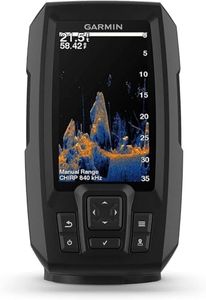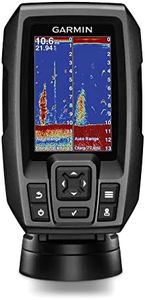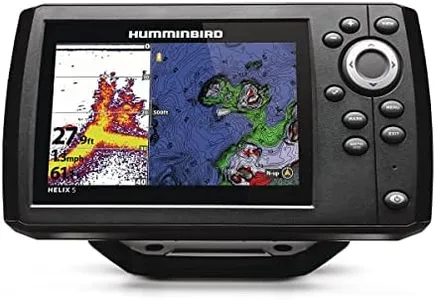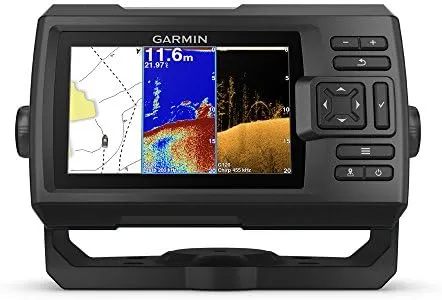10 Best Kayak Fish Finders 2025 in the United States
Our technology thoroughly searches through the online shopping world, reviewing hundreds of sites. We then process and analyze this information, updating in real-time to bring you the latest top-rated products. This way, you always get the best and most current options available.

Our Top Picks
Winner
Garmin Striker Vivid 7sv, Easy-to-Use 7-inch Color Fishfinder and Sonar Transducer, Vivid Scanning Sonar Color Palettes (010-02553-00)
Most important from
2228 reviews
The Garmin Striker Vivid 7sv is designed to be a user-friendly fishfinder with a bright 7-inch color display that makes it easy to see fish and underwater structures. Its vivid scanning sonar color palettes help differentiate fish from other objects, which is a big plus when you're on the water. It supports multiple sonar types including traditional CHIRP, ClearVü, and SideVü, giving you detailed views beneath and beside your kayak. The built-in high-sensitivity GPS lets you mark waypoints and create routes, which is great for tracking your favorite fishing spots or navigating unfamiliar waters.
The unit also includes Quickdraw Contours mapping, allowing you to create custom depth maps as you fish. Wi-Fi connectivity is a modern bonus, letting you connect to a smartphone app to transfer waypoints and receive updates without hassle. On the downside, the unit relies on button controls instead of a touchscreen, which might feel a bit dated for some users. While it includes a transducer suitable for kayaks, the device is somewhat larger and heavier than ultra-compact models, so consider your portability needs if you prefer very lightweight gear.
The Striker Vivid 7sv is a solid choice for kayak anglers who want clear sonar images, GPS functionality, and smartphone integration, all without a steep learning curve.
Most important from
2228 reviews
Lowrance 000-16129-001 Eagle Eye 9 Live Sonar Fishfinder with Transom-Mount Transducer and Preloaded C-MAP Inland Charts, 9" IPS Screen, Black
Most important from
132 reviews
The Lowrance Eagle Eye 9 Live is a solid choice for kayak anglers looking for a reliable fish finder with a large 9-inch IPS screen that offers clear viewing from all angles, even when wearing polarized glasses. Its standout feature is the Eagle Eye transducer, which delivers four different sonar views including live forward and down imaging, CHIRP sonar, and DownScan Imaging with FishReveal technology—all without needing extra modules. This makes it easier to spot fish and understand underwater structures in real time.
The built-in C-MAP US Inland charts with coverage of over 17,000 lakes are great for navigation and detailed fishing spots. It also includes autotuning sonar, which simplifies setup by automatically adjusting for optimal sonar performance. The twist-lock connector system adds convenience for quick installation on different boats or kayaks. The device is battery-powered, fairly lightweight at 2 pounds, and features a standard plastic build, along with a 1-year warranty for peace of mind.
Users who want a straightforward, easy-to-use fish finder with multiple sonar views and detailed lake charts will appreciate this model. Those seeking very high-end GPS features or longer battery runtime may want to compare other options. Its combination of a large, bright screen and versatile sonar makes it especially well-suited for kayak fishing on inland lakes.
Most important from
132 reviews
Lowrance Elite FS 9 Fish Finder with Active Imaging 3-in-1 Transducer, Preloaded C-MAP Contour+ Charts
Most important from
585 reviews
The Lowrance Elite FS 9 Fish Finder is designed for anglers who want detailed underwater insights. It features a 9-inch high-resolution multi-touch LCD screen, making it easy to view and navigate through various settings. One of its standout features is the Active Imaging 3-in-1 transducer, which combines CHIRP, SideScan, and DownScan sonar technologies. This allows for clear and refined imaging of underwater structures and fish. Additionally, it supports ActiveTarget Live Sonar, which provides real-time images of fish and their movements, enhancing the fishing experience.
The preloaded C-MAP Contour+ charts are another significant advantage, providing detailed mapping of 8,900 U.S. lakes to help locate prime fishing spots. The inclusion of full networking capabilities like integrated wireless, NMEA 2000, and Ethernet connectivity allows for easy integration with other devices and data sharing. However, the device is relatively heavy at 4.53 kilograms, which might affect portability for some users, especially those looking for a lightweight option to carry on a kayak.
The high-tech features and networking options might be overwhelming for beginners who prefer simpler fish finders. Additionally, it requires a 12 Volt DC power source, which is something to consider for long fishing trips. The Lowrance Elite FS 9 is a robust and feature-rich fish finder suitable for serious anglers who need advanced sonar capabilities and detailed mapping, but its weight and complexity might be a drawback for casual users or those prioritizing portability.
Most important from
585 reviews
Buying Guide for the Best Kayak Fish Finders
Choosing the right kayak fish finder can significantly enhance your fishing experience by helping you locate fish more efficiently. When selecting a fish finder, it's important to consider various specifications that will determine how well the device meets your needs. Understanding these key specs will help you make an informed decision and ensure you get the best fit for your fishing adventures.FAQ
Most Popular Categories Right Now
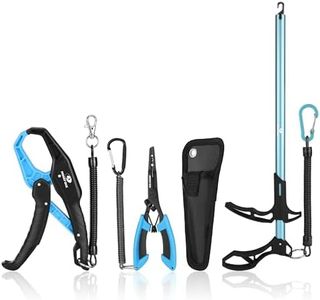

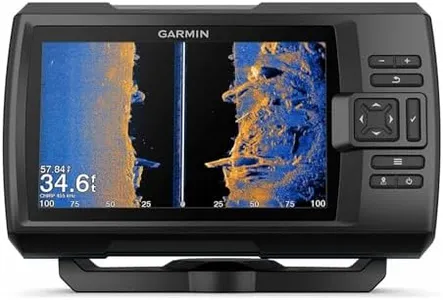
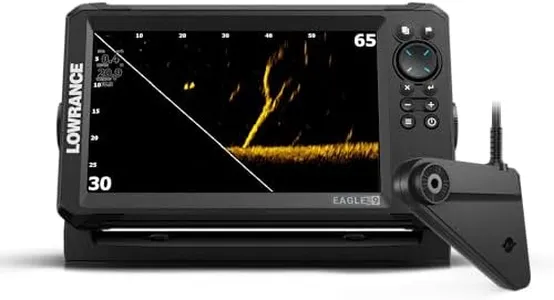

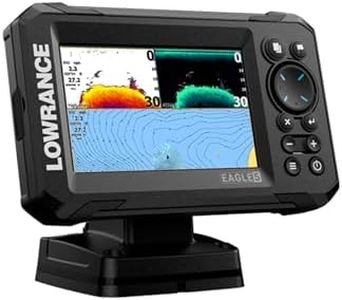
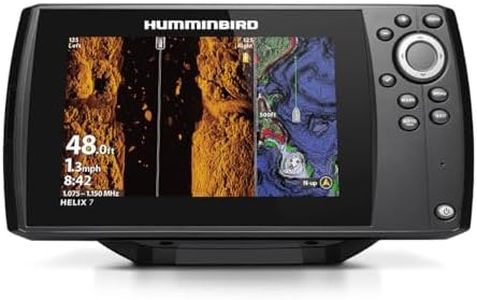
![[FishPRO® 2026 Upgrade] NO.1 HD 1080P Underwater Fishing Camera 7'' IPS- DVR-32GB, w/10,000mAh(Ease To Use), Ice Fishing Camera Underwater, Fish Finder Camera for Boat Ice Lake Fish, USB-C/LED+IR/82ft](https://images-proxy.bestreviews.guide/R_b1c0dzqWoOQ1l6wpTArbSAfYI=/0x300/https://m.media-amazon.com/images/I/51NDJYY8JZL._AC_CX679_.jpg)


![[FishPRO®2025 Upgrade] [Auto-Focus 2''- 40''] Underwater Fishing Camera w/DVR 32GB,1200TVL, Ice Fishing Camera Underwater Fish Finder, w/IR+LED Light for Dark, 4500mAh w/ [Spare Charging Port], 49ft](https://images-proxy.bestreviews.guide/acq3_QtcLbcjVSUbrd75CGmUBuk=/0x300/https://m.media-amazon.com/images/I/51hexOA1C9L._AC_CX679_.jpg)
![[FishPRO® 2025 Upgrade] 4.5'' True HD 1080P Underwater Fishing Camera w/DVR-32GB, (NO Need Learn) Ice Fishing Camera Underwater, Ice Fish Finder Camera - w/ 5,000mAh & USB-C, IR+LED, 20m/66ft](https://images-proxy.bestreviews.guide/0CVGaE9o20DmnIASQqwX_PN8NoA=/0x300/https://m.media-amazon.com/images/I/51BAH60l9ML._AC_CX679_.jpg)

